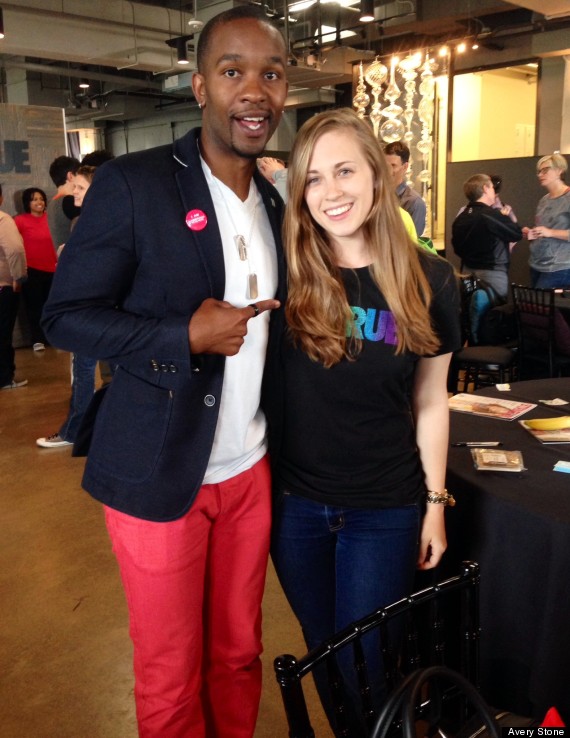One year ago I walked into a place I never thought would exist: the second annual LGBT Sports Summit at the Nike headquarters in Portland, Oregon -- in other words, the first conference working to end homophobia and transphobia in American sport. That day a sign on the wall commanded my attention. In large, euphoric, rainbow letters, the sign shouted #BETRUE, Nike's slogan for its campaign supporting the movement. I had arrived.
Last weekend I attended the third LGBT Sports Summit. However, over the past year the climate has shifted in a big way. The movement for LGBT equality in sports has gained serious momentum, attaining two major components needed to effect change in this country: power and money.
Currently the power of this movement is immense. In the past months LGBT athletes have earned a platform on the national stage. Newly out athletes -- including the WNBA's Brittney Griner, the NBA's Jason Collins, the NFL's Michael Sam, UMass Amherst's Derrick Gordon, and the Olympic women's hockey team's Caitlin Cahow -- have become household names. Additionally, the anti-LGBT policy in Russia ignited another level of debate around the Sochi Olympics.
The money fueling this movement is also significant. This year Nike will donate up to $500,000 of net proceeds from the sales of the #BETRUE collection to the LGBT Sports Coalition, a group of leaders from different activist organizations, to work toward LGBT equality in athletics. This level of financial support -- from one of the world's most recognizable brands -- is extremely significant.
However, after leaving this latest summit -- and ruminating on the movement's progress -- I cannot help but consider the next level. As someone inside the action (I am a former college ice hockey player and currently work with two LGBT activist organizations), I find that it feels difficult to step back and question the process. But it is essential. We need to take what we've learned and go big or go home. Here are my top three takeaways.

We all need to actively educate ourselves.
Everyone could be more educated. Even within the ranks of this movement, we still struggle to understand and validate everyone under the LGBT umbrella. At the summit participants' presentations on other identities -- race, gender, gender identity, and religion -- drove this home by focusing on subtler forms of discrimination that often stem from ignorance. For example, transgender athletes Chris Mosier and Cory Oskam explained biological sex, gender, gender identity, gender expression, and preferred pronouns. The nuances between these often get overlooked -- within this movement. I've certainly made this mistake. Not only have I misused these terms, but I still catch myself misusing gender pronouns when I'm not conscious of my speech. To move forward, we all need to challenge ourselves -- and one another -- to do better.
We need to push for coverage and clarity.
Visibility will continue to fuel this movement. Over the past year major athletes' coming-out stories have galvanized a national discussion. Now it is our responsibility to advocate for more coverage -- and to hold the media accountable when they get it wrong. Additionally, we need push the LGBT Sports Coalition to publicize its events and projects so that the media can cover it as news. For example, at the second summit Jason Collins was our keynote speaker, and the guest list included a host of media members. This year there was no high-profile speaker. The conference was smaller and did not seem to make it a priority to include mainstream media. I find this too insular, given that awareness is the goal. Events like this summit should be shared with as many people as possible.
This movement is still dominated by cisgender white men. We need more voices.
Looking around the summit, I found the racial homogeneity shocking, but it took an insight from Wade Davis of the You Can Play Project (pictured above) to make me realize that. During a presentation Davis asked an excellent question that I'm ashamed I had not asked myself: "Why is it that the majority of the major athletes who've come out have been black, and yet this conference of decision makers is largely white?" Additionally, three people presented on women's issues at the summit, and two of them were men. While the men spoke respectfully, I see something fundamentally wrong here. Women should be speaking about women -- bottom line. Over the years the misconception that all female athletes are gay has deterred many from coming out or declaring themselves allies. More women must push past that stigma and step up. Lastly, while this homogeneity may not seem surprising in a microcosm of the larger LGBT-rights movement, that larger movement is also still dominated by white gay men in leadership positions. To affect change in both, we must diversify the discussion.
My intention here is not to invalidate any previous work. But to attain the original goal -- achieving LGBT equality in sport by 2016 -- we need to be thinking and doing bigger, all together.
The competition is still fierce. And we need to be in it to win it.
